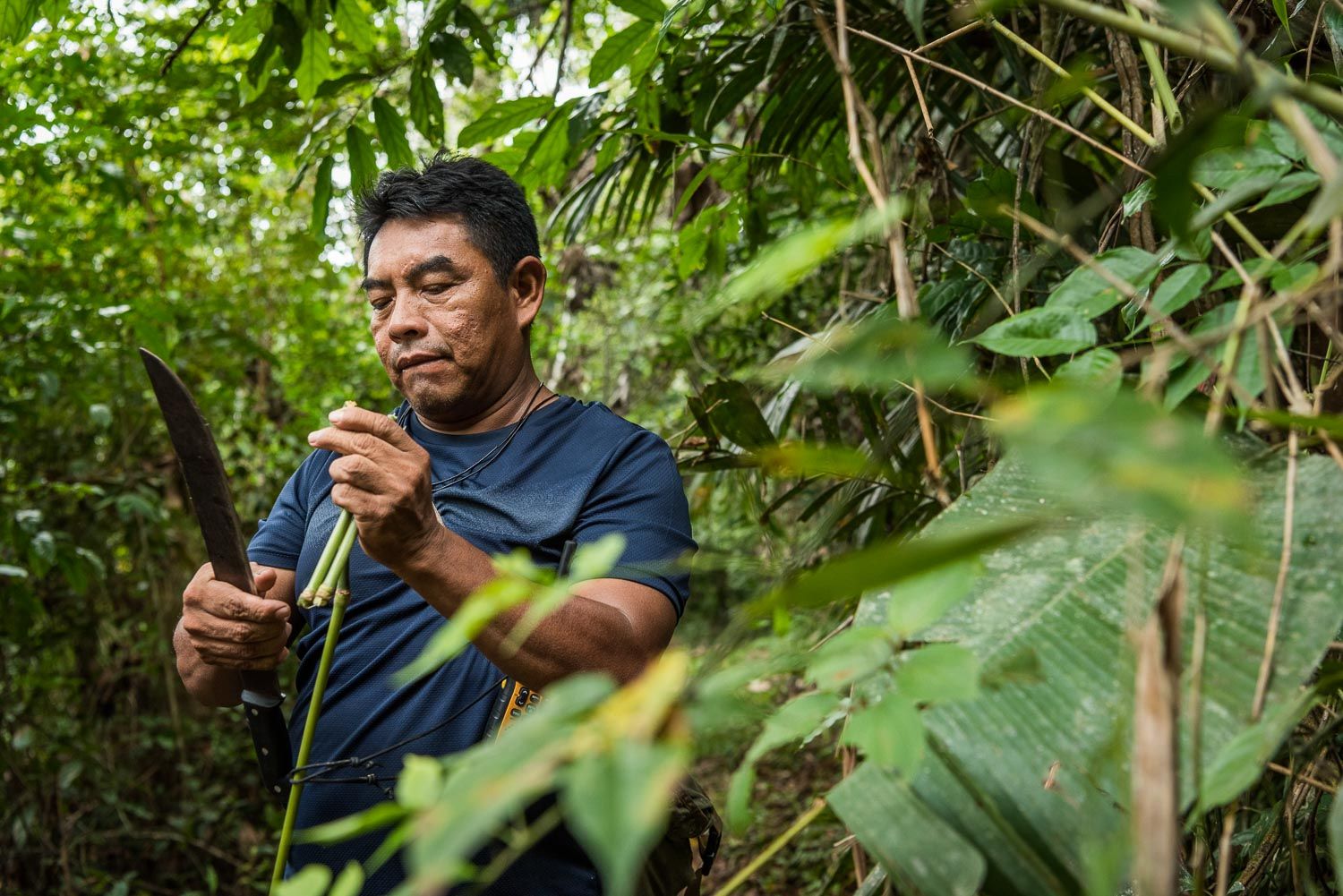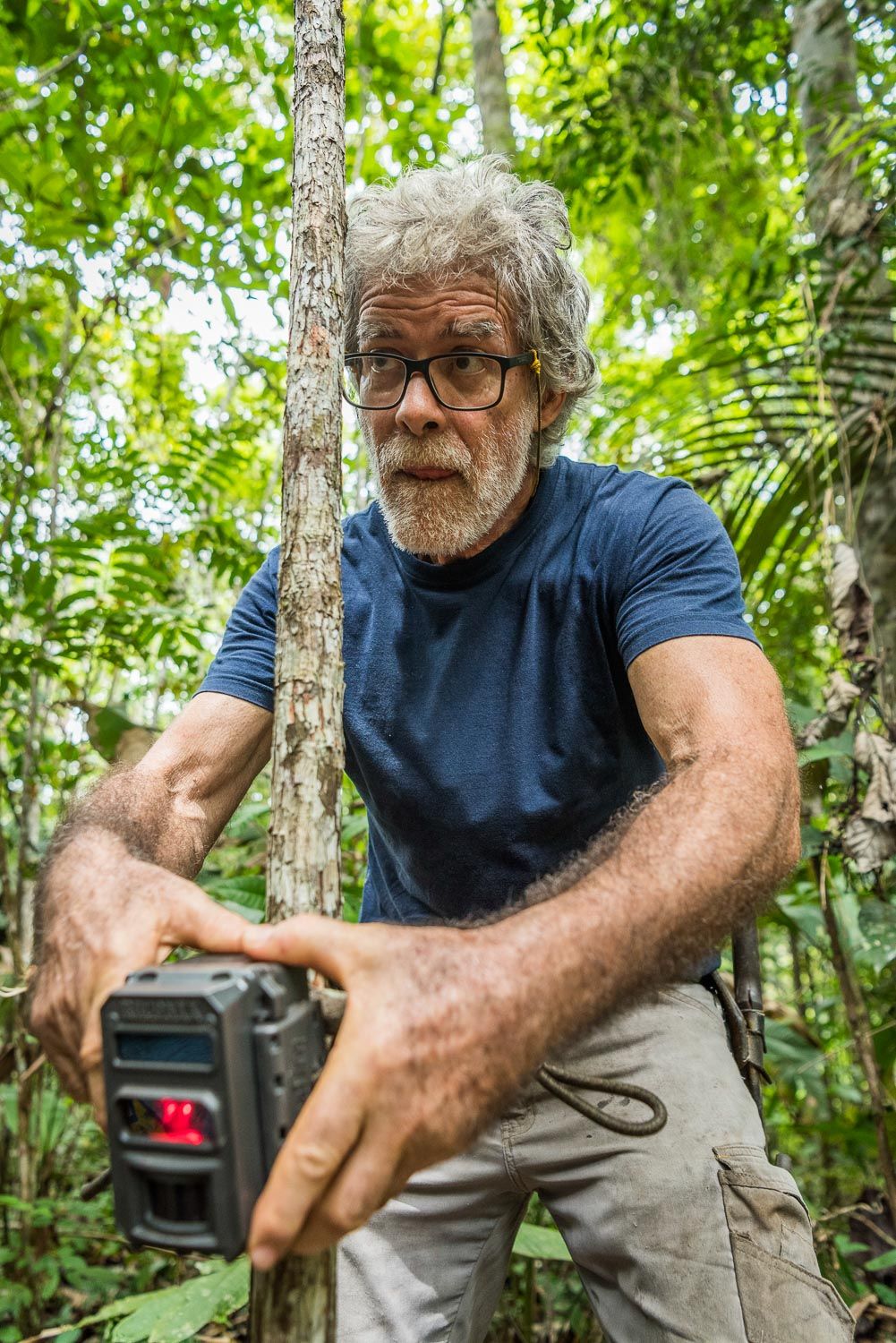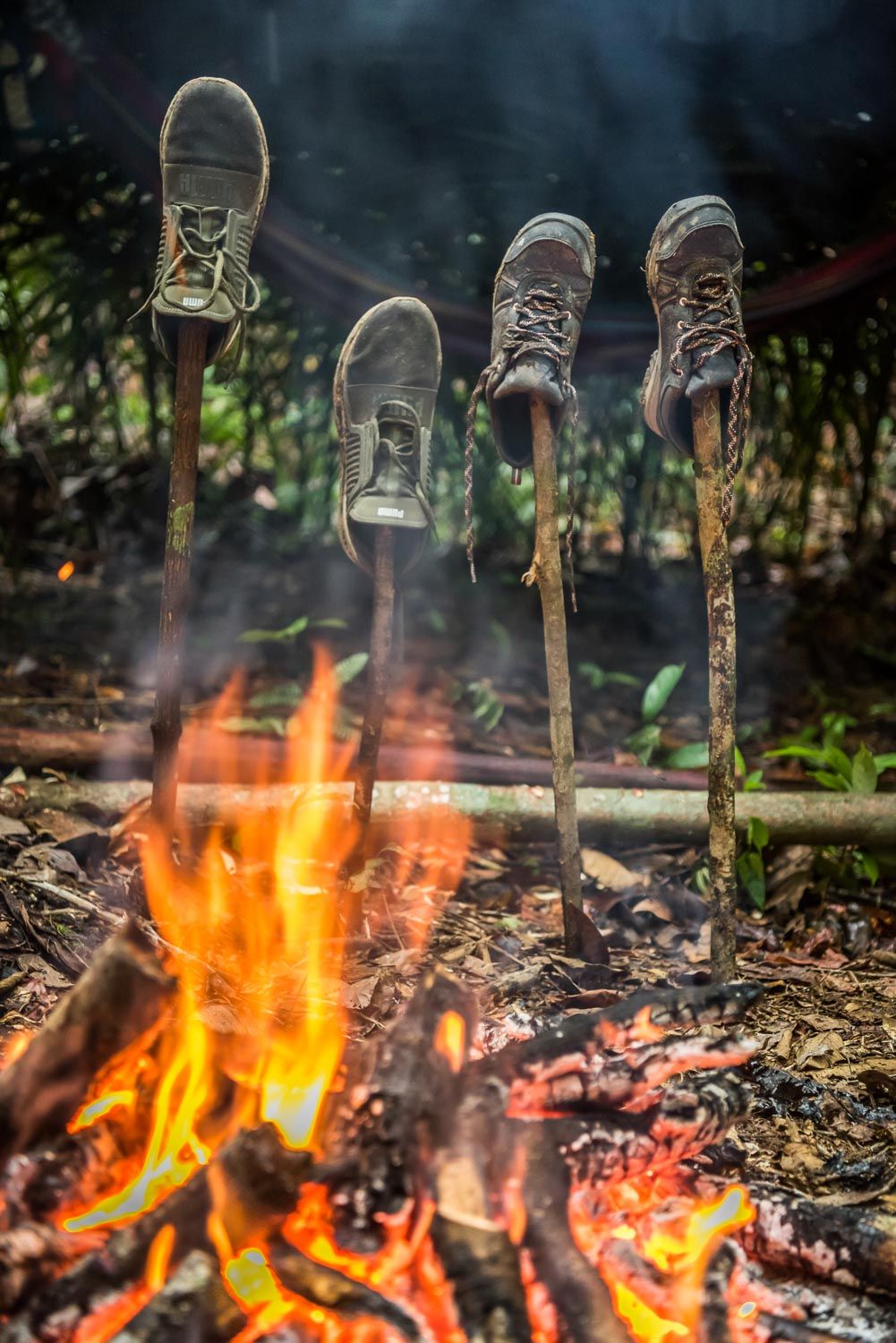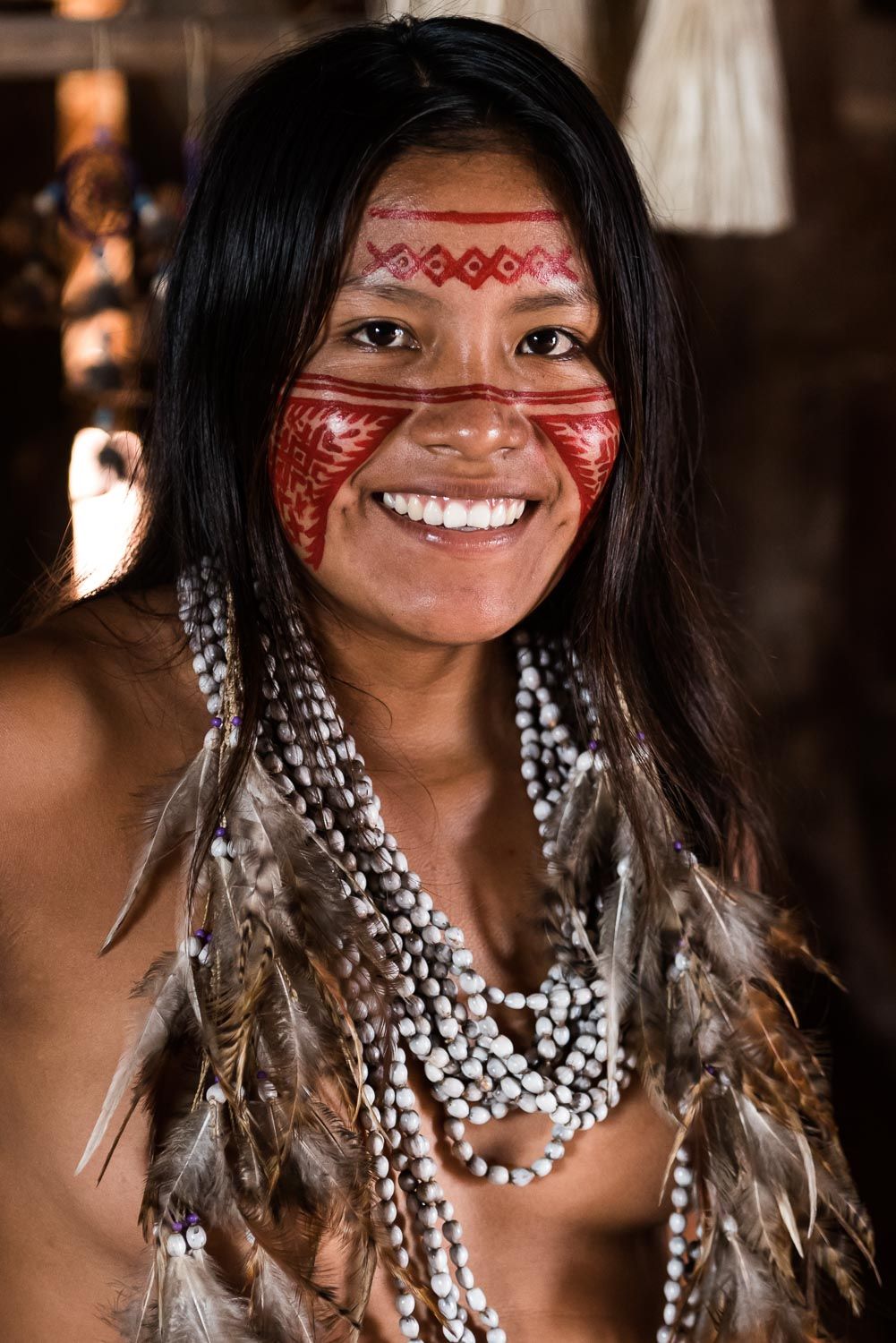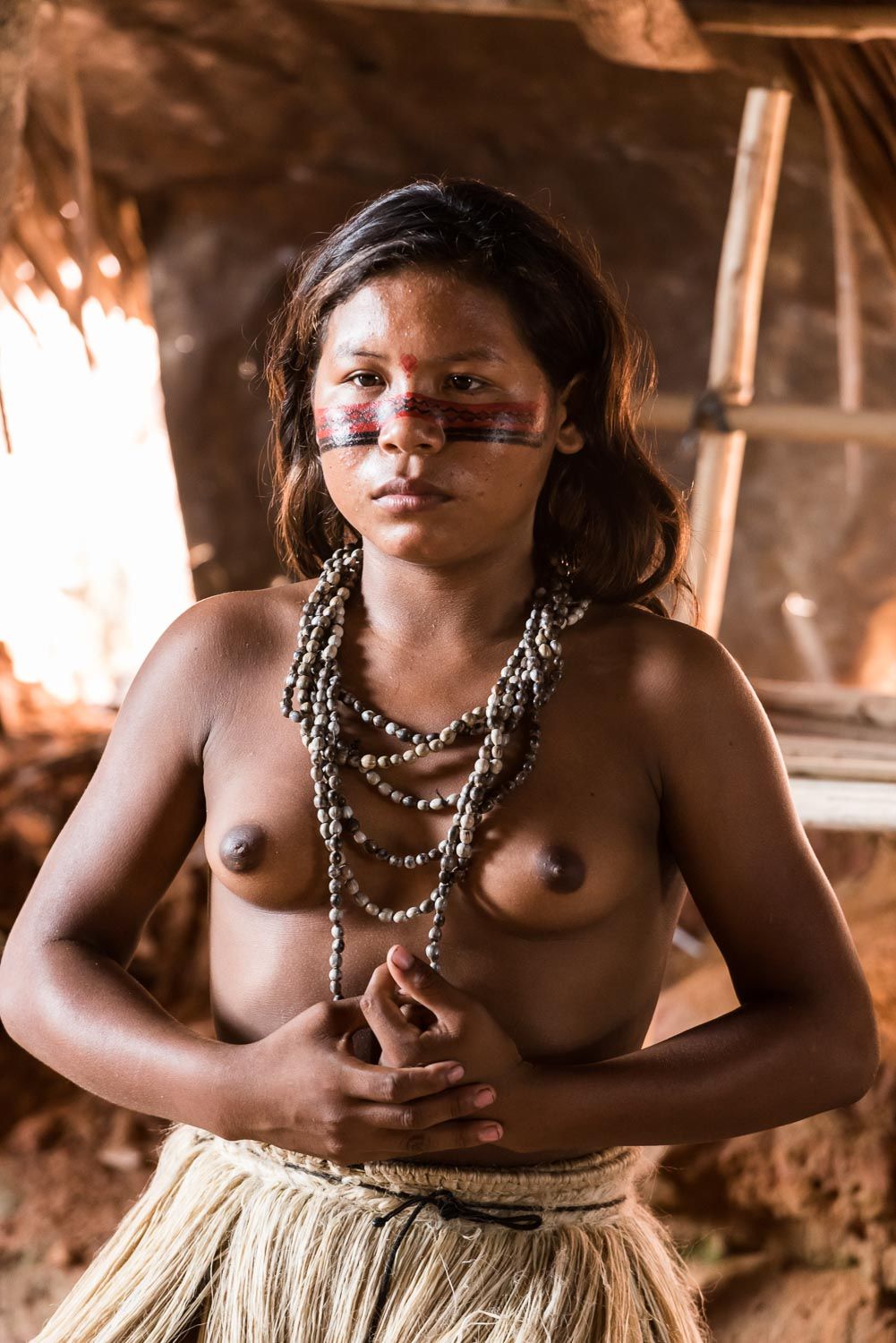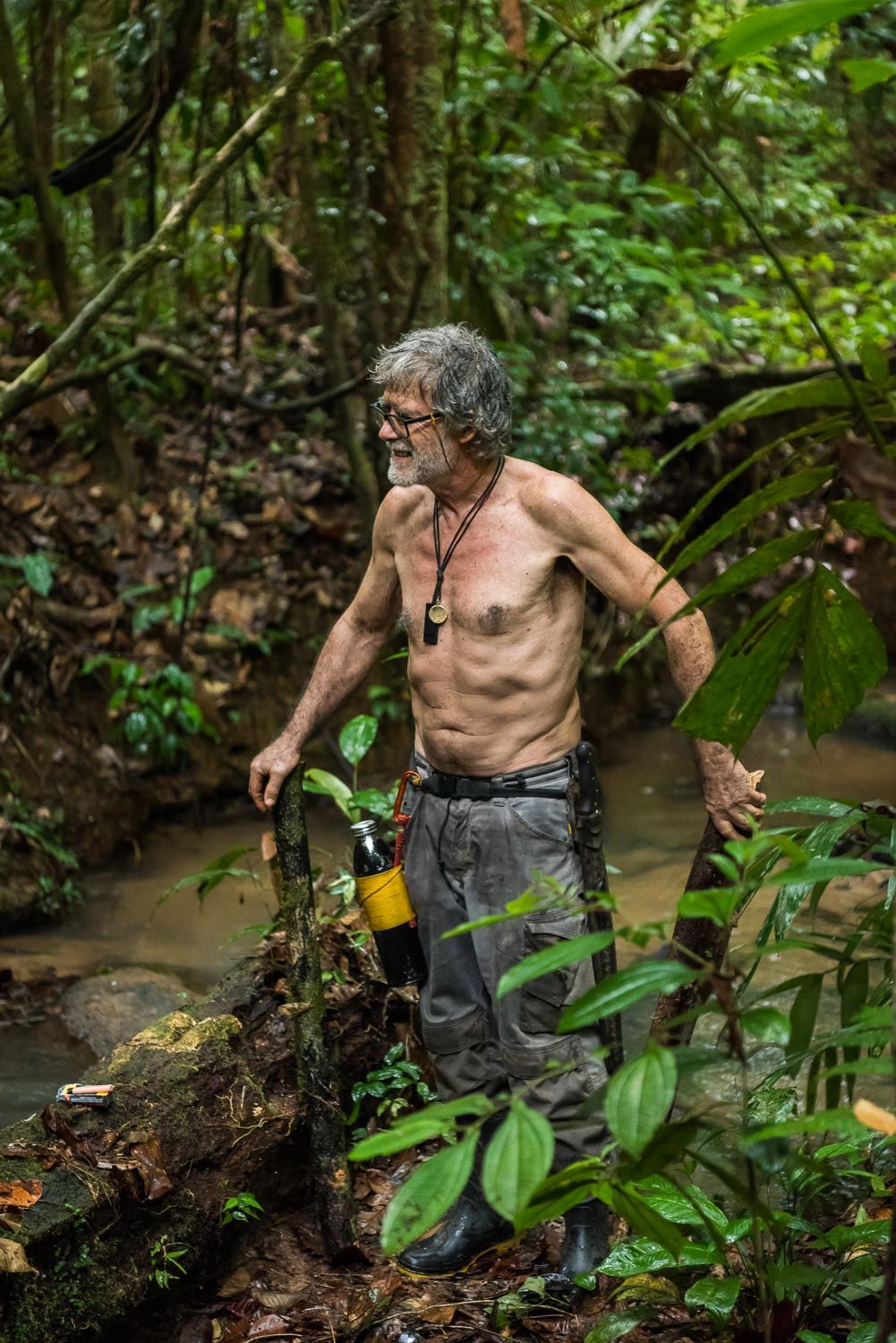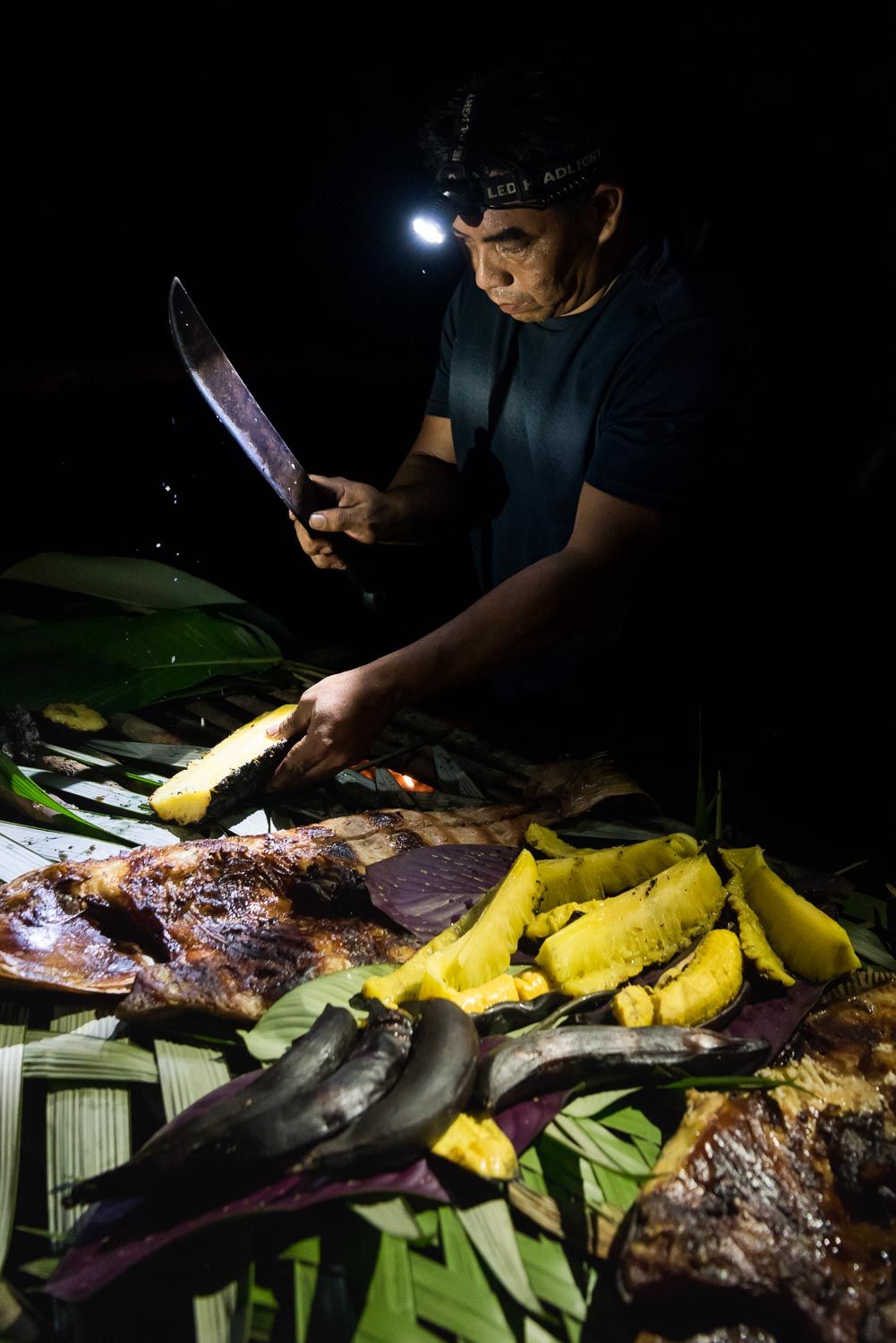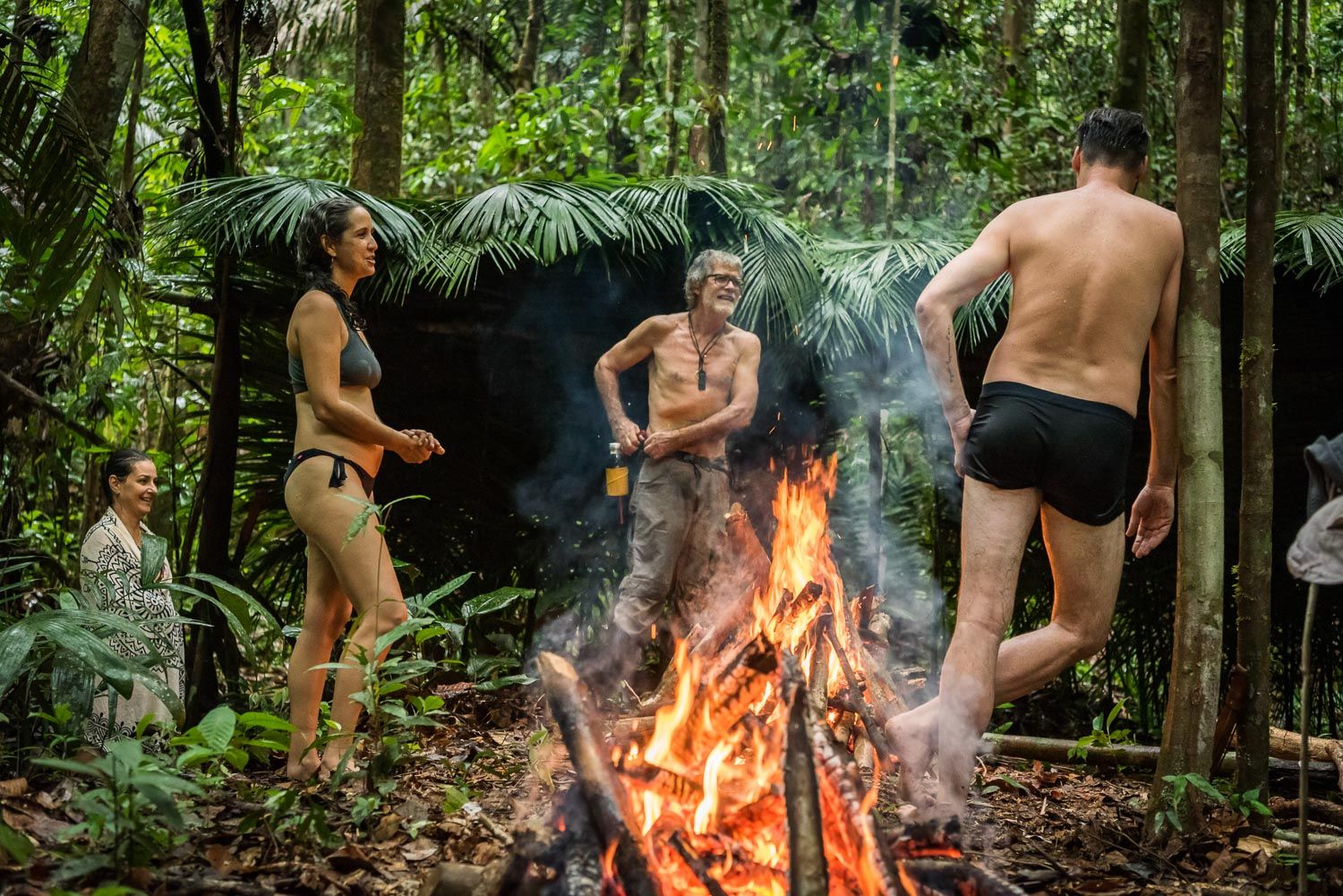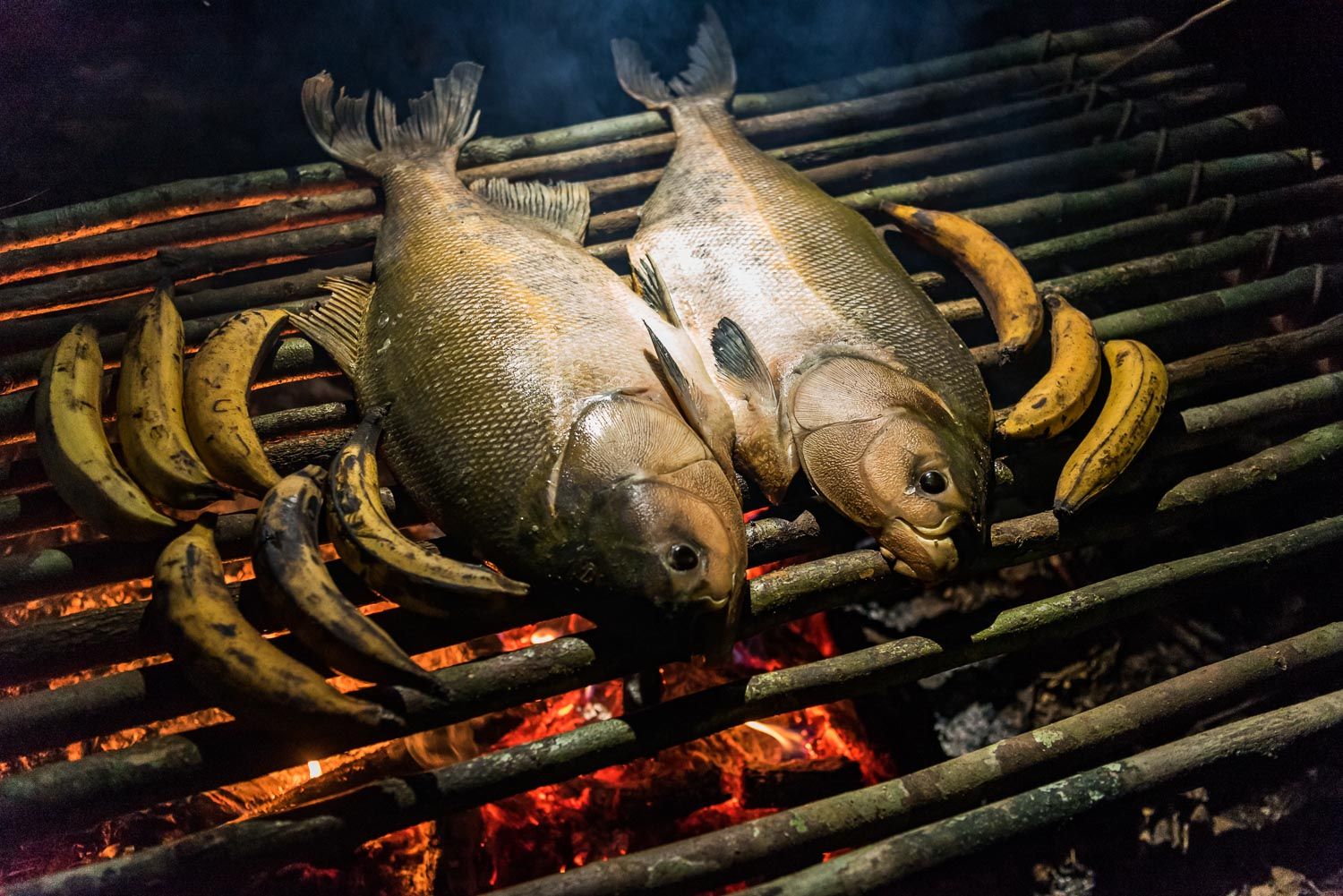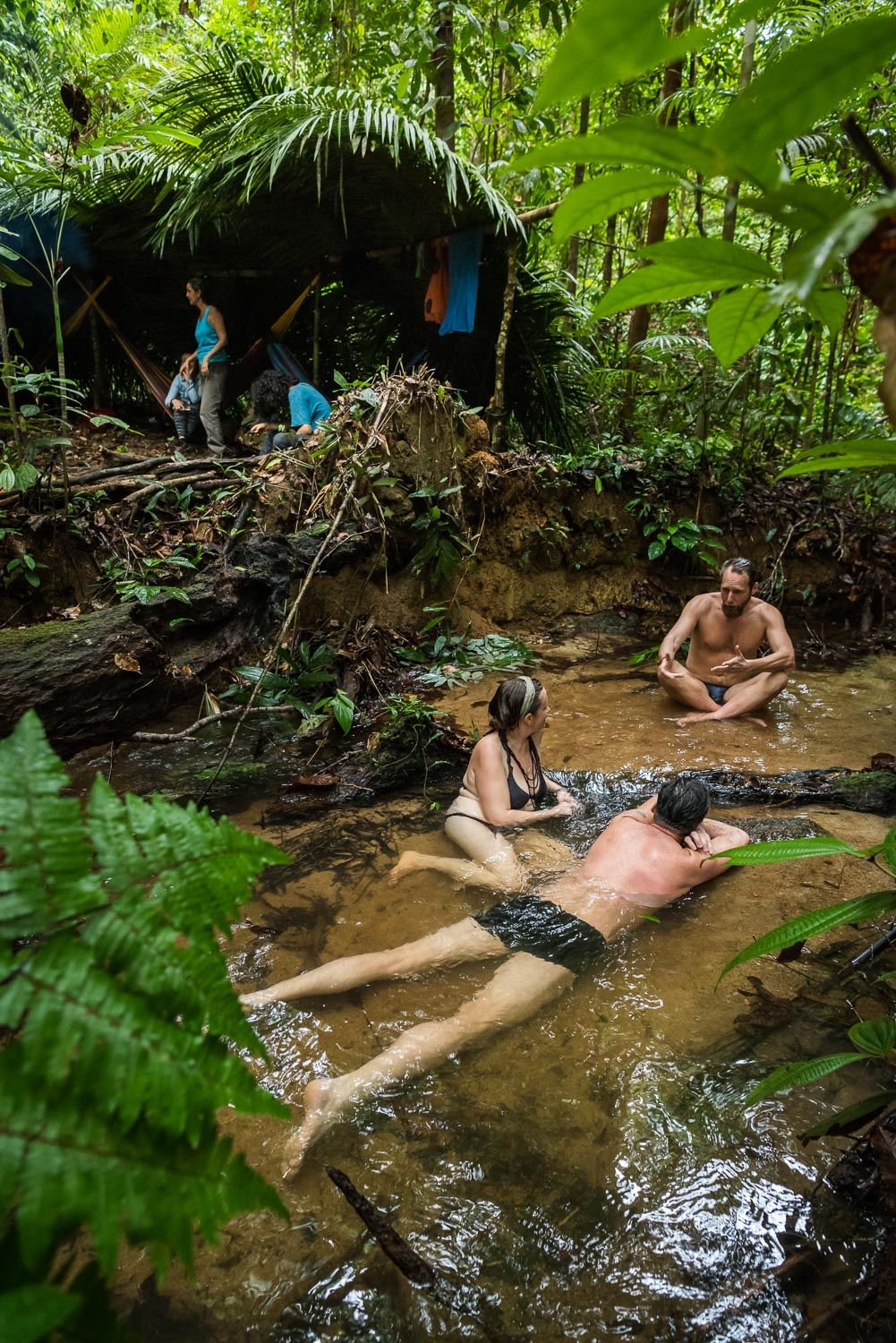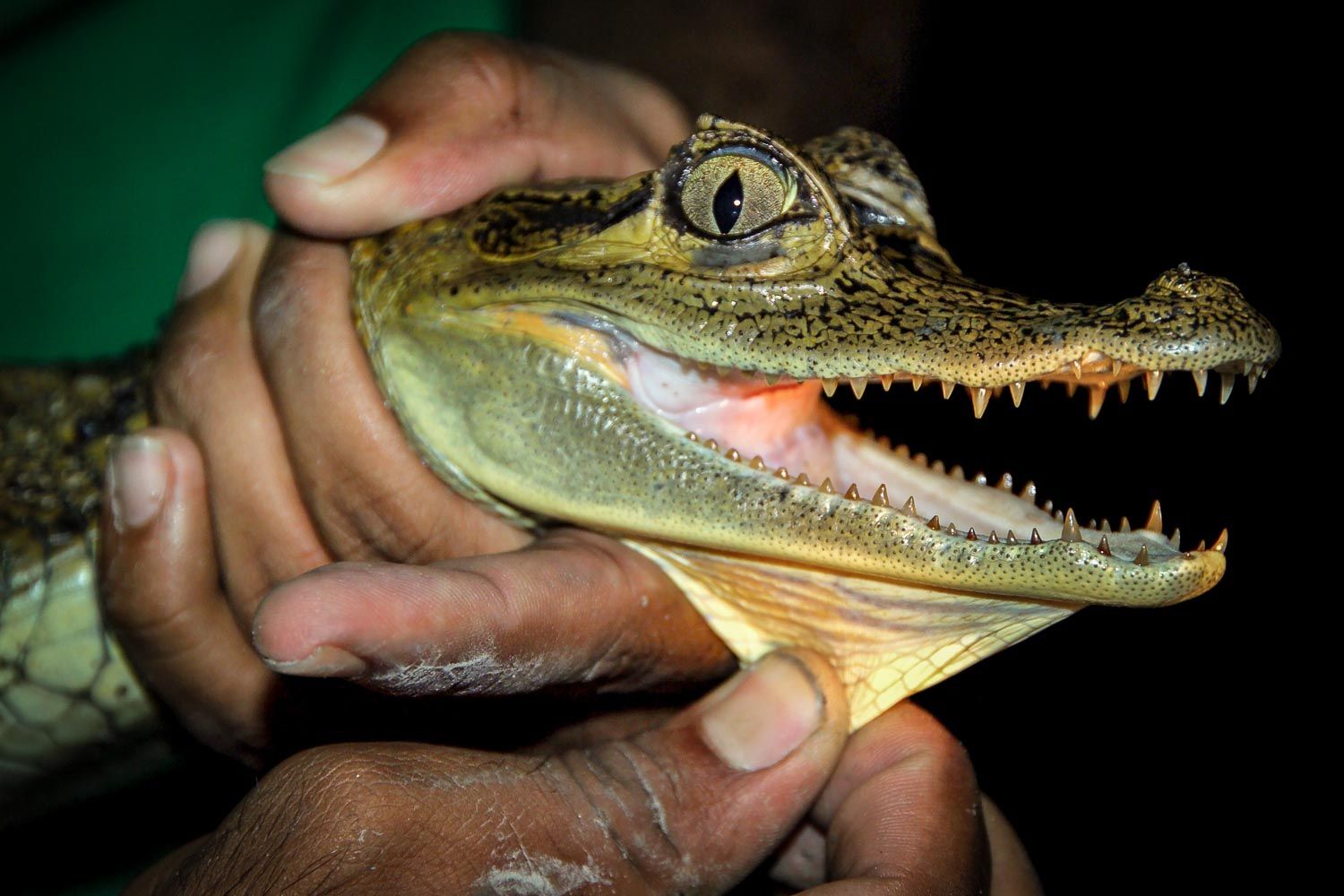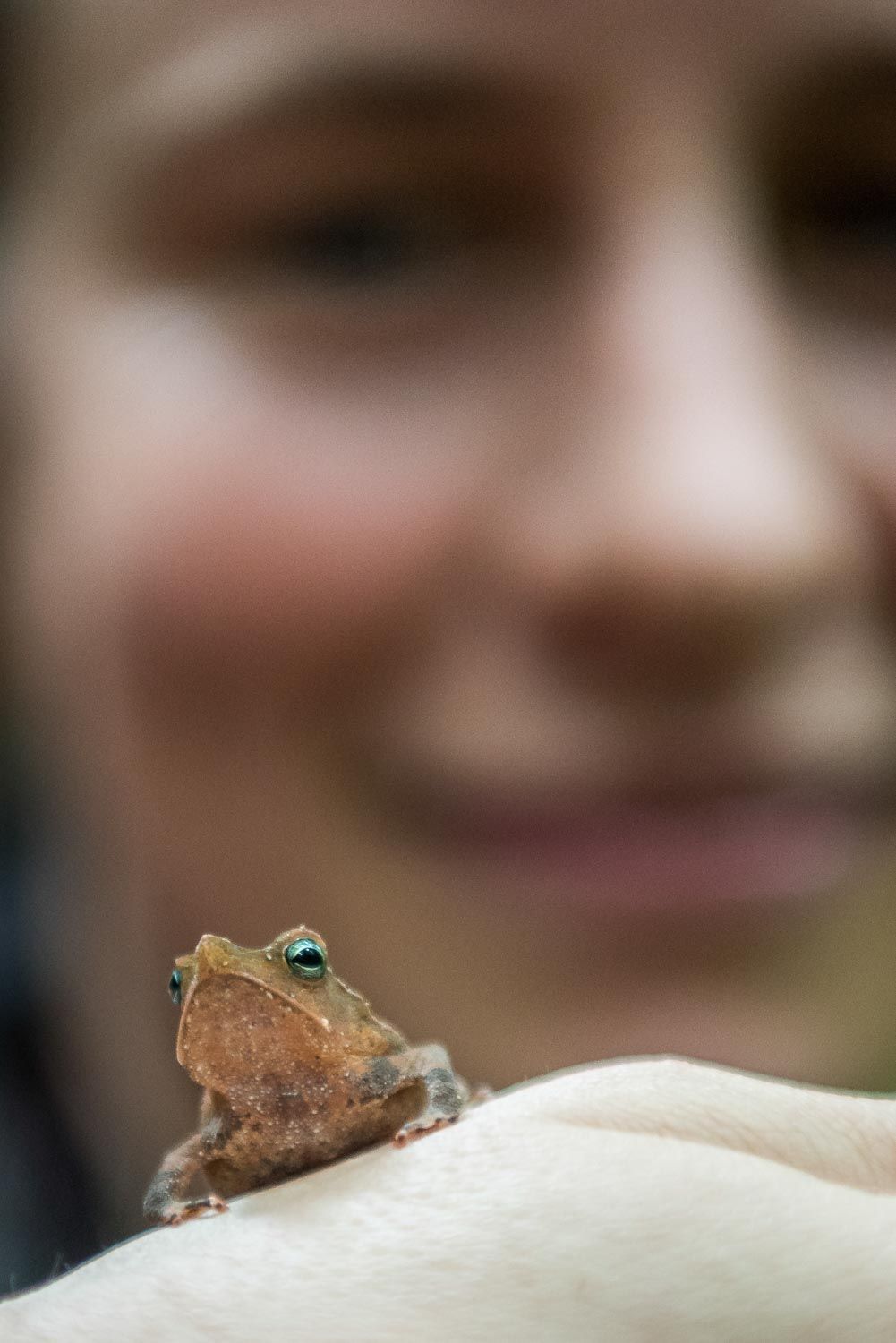Exploring the giants of the rainforest
Amazon Expedition, Brazil
Deep in the Amazon there is a place where, surrounded by the wilderness and all her inhabitants, you can experience the rainforest in an extraordinary way. Travel journalist Marco Barneveld and photographer Frits Meyst went on an expedition.

The Amazon is wild, untamed, a living organism in which everything is connected. Here, man is no ruler, just a visitor
It is exciting, that’s for sure. The Amazon is wild, untamed, a living organism in which everything is connected. Here, man is no ruler, just a visitor. Humility is befitting. Whoever thinks he can just take a hike without expertise, risks life and limb. There are many ways to die in the rainforest. Guide Samuel Basilio knows the jungle better than anybody else. As a scout in the Brazilian army, he was stationed in the middle of this forest uninterrupted for two years. Without a supply of anything. Depending only on whatever available in the wilderness to survive. And surviving is his second nature, as second-generation descendent of two indigenous Indian tribes: the Baré on father’s side and the Baniwa on mother’s side.
Manaus
It seems ages ago that we left Manaus the day before yesterday, the capital of Amazonas, the largest of the 26 Brazilian provinces. In comparison: Amazonas is as large as France, Germany and Spain combined. The Netherlands fits in it almost 37 times. Nevertheless, this area is sparsely populated, only four million people live here, half of which in Manaus. During the Amazon rubber boom from 1879 to 1912, the city became fabulously rich. But when in 1912 the rubber price plummeted, the city fell into decay rapidly.
Manaus seems unreal. An enormous city filled with ghastly buildings, mouldy concrete colossus and here and there a well-preserved pearl from the old glory days. Like the beautiful neo-classicist opera building Teatro Amazonas from 1896. The rubber barons were big spenders when they still had money. And what a location they picked for a city this size: In the middle of the humid jungle, on the shores of the Rio Negro and the Rio Solimões, that fuse into the Amazon River. A spectacle called ‘Encontro das Águas’, Portuguese for ‘meeting of waters’. For six-kilometre, the warm blue-black water of the Rio Negro and the cooler, sand-coloured water of the Rio Silimões stream slowly sideways. If you want to reach Manaus, you can do so by plane or by boat. Forget the road. The roads available are in bad condition, mostly overgrown or washed away. On top of that, the distances are enormous. Rio de Janeiro, for example, is 4300 kilometres away. That’s from the Netherlands halfway to Iraq. Or to the North Pole.
For six kilometres, the warm blue-black water of the Rio Negro and the cooler, sand-coloured water of the Rio Silimões slowly stream side by side
Manaus is our stop-over on our way to the house of Vanessa Marino and her partner Leo Principe, about 120 kilometres north of Manaus, in the municipality Presidente Figueiredo. Originally from Venezuela, Vanessa and the French-Italian nature protector and photographer Leo bought more than 270 hectares here, an area as large as Utrecht’s inner-city area, and built a house for themselves, their three children and Vanessa’s mother. They also built a guest house on the terrain. With their company Amazon Emotions, they welcome guests here on a very small scale, who they then teach about the beauty of the rainforest. The reception here is so welcoming and free, that I instantly feel like a family friend instead of a paying customer.

The earth’s lungs
The house is built on a hill, one of the highest points for miles around. Lying in my hammock on the veranda of the guesthouse, I look out over what is primarily rainforest. In the distance, I hear the howls of howler monkeys and the screeching of parrots. The flowers make the jungle’s roof turn purple in the lingering white mist. Smells of fresh rot, earth, heat and humus find their way into my nose. The smell of fertility. It is almost surreal, this view of the purple coloured tree treasure, this sight of an untouched planet.
Since sixty per cent of the Amazon’s biodiversity is situated in the treetops, Leo developed a non-invasive technique to climb the rainforest’s woodland giants

Black earth
Leo is fascinated by agricultural techniques of former civilisations, and mostly by terra preta. ‘Terra preta is a very fertile black soil type that covers ten per cent of the Amazon basin,’ Leo explains on the spot where he tries to reproduce this man-made soil. ‘This soil is extremely fertile and hardly ever gets exhausted. Terra preta was first created 1500 to 2800 years ago. It is created by making charcoal from certain plants around here and mixing it with the soil already there. Terra preta does not just function as a water and nutrient sponge, but the humus soil breaks down slower and colonies of micro-organisms come into being in the soil, guaranteeing a sustained supply of nutrients. Amazing stuff.’
‘This soil is extremely fertile and hardly ever gets exhausted.’
But it’s not only terra preta that fascinates him, he also researches other traces left behind by that same forgotten civilisation. He shows me aerial photographs revealing large circles. ‘We now know what those circles were: huge fishing ponds. I am fairly certain the Indians dug those fishing ponds, because they are clearly man-made. Around the ponds, various types of fruit-baring trees grow, like açai and lupuna. The planted trees were selected in a way that they bear fruit throughout the year. Because the trees were growing on the water’s edge, those fruits fell into the pond. Fish food. All-year-round. Without the Indians having to do anything themselves. Genius, right? I want to make such a pond on our land as well.’
I too put some powder in the straw and blow it into my nose through the other end. A sharp pain shoots through my head and my eyes tear up instantly
Rustling
‘Do you want to try this?’ Leon winks at me and hands me some kind of wooden straw with two ends. ‘This is the powder the Indians used to clean their cavities,’ Leo explains, his eyes sparkle. ‘Wait, I’ll show you.’ He takes a box and opens it. It contains a brown powder. Leo takes a little bit of the stuff between thumb and index finger, puts it in one end of the straw and puts that end to his nose. The other end he puts in his mouth, and then he blows hard. I see his face twitch. Then he hands me the straw. I too put some powder in the straw and blow it into my nose through the other end. A sharp pain shoots through my head and my eyes tear up instantly. Wow. ‘Now blow your nose,’ Leo says. I won’t go into detail, but my head empties forcefully. And then, all smells become three times as intense. ‘You need all your senses sharpened as much as possible in the jungle,’ Leo explains. ‘A stuffy nose can be a handicap. This is a secret recipe to solve that problem.’

I am reminded of Leo’s words when we walk through the rainforest later on, looking for a good spot for our camp. Guide Samuel leads. Here and there, he uses his machete to cut away a plant blocking our path. Suddenly, he stops and signals with his hand for us to do the same. He looks around, almost skittishly. Slowly he puts his nose in the air and inhales the jungle air deeply. ‘Do you smell it?’ he whispers. I, too, inhale the air but don’t get past the moist soil, rotting plants and tropical flowers. Samuel nods in northern direction. Again I put my nose up in the air, but I really don’t know what he is talking about. Samuel looks at me and whispers: ‘Jaguar.’ Immediately, I am alert and look back. This feline predator is known for jumping his prey from behind to shatter the skull with a snap of his powerful jaws. Only yesterday, Samuel told me about one of his family members who was attacked by a hunting jaguar at night.
Samuel nods in northern direction. Again I put my nose up in the air, but I really don’t know what he is talking about. Samuel looks at me and whispers: ‘Jaguar.’
I hear rustling and jump up, but Samuel’s posture shows me our surroundings are all clear. “When my family member disappeared, we didn’t hunt the animal,’ Samuel says. ‘We caught a capybara, a giant rodent, and sacrificed it to the jaguar.’ In the jungle, the jaguar is king. Samuel grabs his machete and cuts off a branch, keeping his finger on the tip. ‘Open your mouth,’ he says, and he pours cool liquid from the branch into my mouth. Delicious. You need to know where to cut,’ Samuel explains. ‘The right spot doesn’t harm the tree, allowing for a new branch to grow within a week, with the same liquid. When you know the jungle, you will never go hungry or thirsty.’ Samuel leads the way, and every now and then he shows us another cool jungle trick: how to make a spear within a minute, or a plant that makes a rope or spears super-fast.
Amazon facts
- The Amazon rainforest is around 5.5 mln square kilometres in size. That is about 192 times as large as the Netherlands.
- About twenty per cent of the earth’s oxygen is produced by the trees in the Amazon forest. The Amazon has an enormous impact on climate and global warming. After all, the trees store a huge amount of carbon.
- In the past fifty years, about twenty per cent of the Amazon forest was cut down.
- The Amazon forest is home to an incredible amount of life: about 16.000 tree species, 2,5 million types of insects, 40.000 different plants, 430 mammals, 1300 bird species, 380 reptiles, 400 amphibians and 3000 fish. And that’s just what has been discovered, a lot is still unknown.
- Many organisations dedicate themselves to the preservation of the rainforest. Think of WWF. Small scale eco-tourism is also a way to do your part. This way, the tropical rainforests earn money without people harming the forest or catching endangered animals.
Cheeky monkeys
My travel companions are asleep in their hammocks, only Samuel and I are awake. Samuel keeps watch, I am reflecting on the day in my hammock. An hour ago, we roasted and ate two tambaqui. The tambaqui is a really fatty fish, a type that likely lived in the old fishponds. The fish is fat because they feed on nuts and fruits from the trees that grow along the Amazon river. Delicious fish. Samuel lights up the treetops with a floodlight. There’s rustling up above. I climb out of my hammock and walk towards him. What’s there? ‘Night monkeys,’ Samuel whispers. ‘I keep them at a distance with the light. They are curious and drawn to the fire. But when they are in a large group, they can attack. Those animals go straight for your throat and have razor-sharp teeth.’
‘Night monkeys,’ Samuel whispers. ‘When they are in a large group, they can attack. Those animals go straight for your throat and have razor-sharp teeth.’
I look up and peer into the dark foliage, but see nothing. I grab a lamp and shine upwards. Did I see…? No, my western eyes are not trained to register the minimal movement that Samuel notices. I give up, bid Samuel good night and crawl back into my hammock. With him keeping watch, I dare to go to the jungle in my dreams.
Discover for yourself and help protect the rainforest
Vanessa and Leo only welcome a few guests each year. By offering responsible tourism and by working together with the locals, they try to create awareness on the biodiversity of the Amazon rainforest. Extremely exceptional are the expeditions to Pico de Neblina, the habitat of the Yanomami Indians. Amazon Emotions is one of the three parties developing sustainable tourism together with Yanomami. That tourism is important because it is ammunition against mining and tree farming that threaten the area. Do you want to discover the Amazon, learn about nature conservation and do your share in the preservation of the Amazon and her inhabitants?
I



